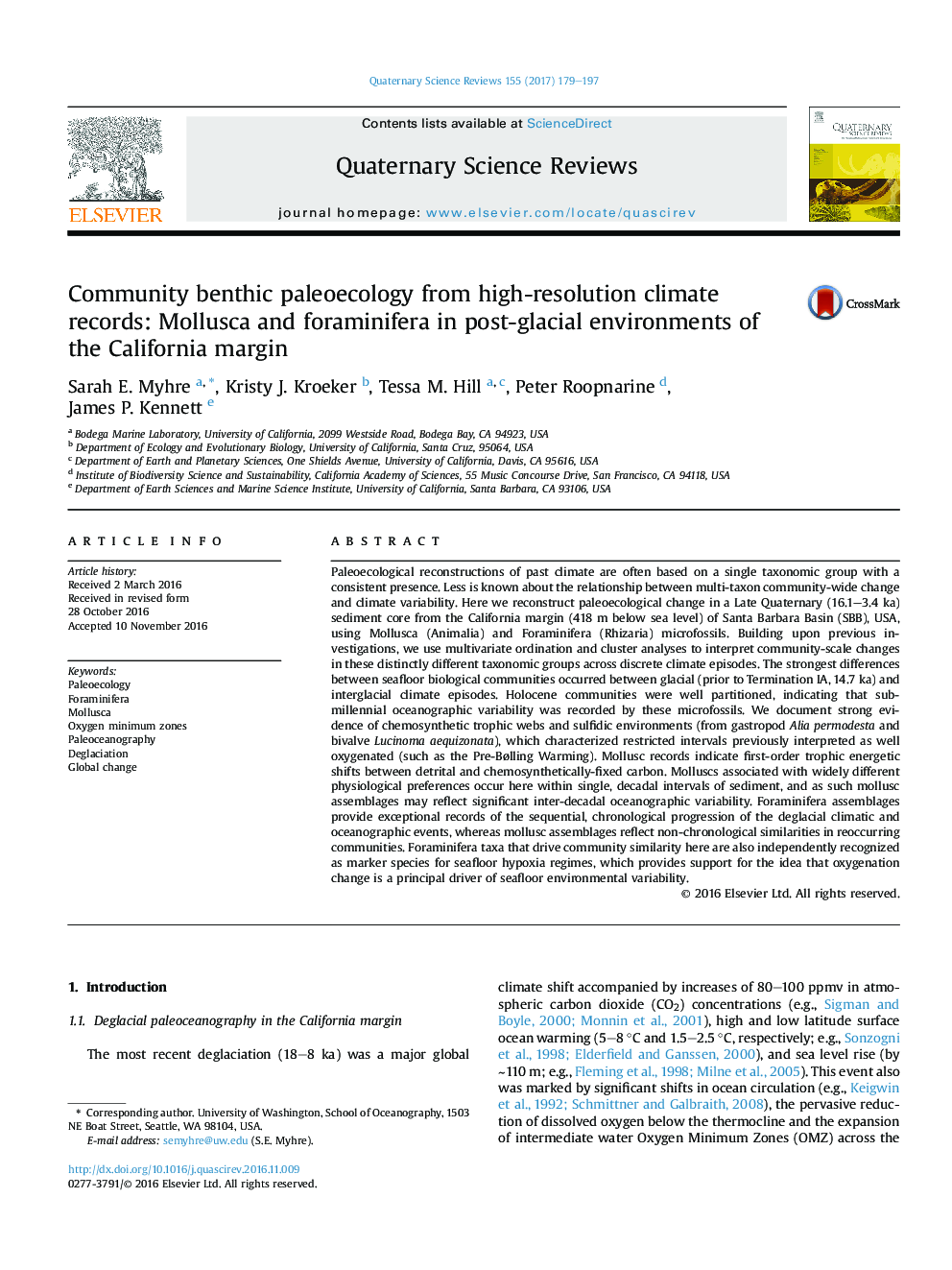| کد مقاله | کد نشریه | سال انتشار | مقاله انگلیسی | نسخه تمام متن |
|---|---|---|---|---|
| 5786847 | 1640780 | 2017 | 19 صفحه PDF | دانلود رایگان |
عنوان انگلیسی مقاله ISI
Community benthic paleoecology from high-resolution climate records: Mollusca and foraminifera in post-glacial environments of the California margin
ترجمه فارسی عنوان
پیلوئکوولوژی بنیادی بومی از سوابق آب و هوایی با وضوح بالا: مولوسکا و فروامینیررا در محیط پس از یخبندان در حاشیه کالیفرنیا
دانلود مقاله + سفارش ترجمه
دانلود مقاله ISI انگلیسی
رایگان برای ایرانیان
کلمات کلیدی
موضوعات مرتبط
مهندسی و علوم پایه
علوم زمین و سیارات
زمین شناسی
چکیده انگلیسی
Paleoecological reconstructions of past climate are often based on a single taxonomic group with a consistent presence. Less is known about the relationship between multi-taxon community-wide change and climate variability. Here we reconstruct paleoecological change in a Late Quaternary (16.1-3.4 ka) sediment core from the California margin (418 m below sea level) of Santa Barbara Basin (SBB), USA, using Mollusca (Animalia) and Foraminifera (Rhizaria) microfossils. Building upon previous investigations, we use multivariate ordination and cluster analyses to interpret community-scale changes in these distinctly different taxonomic groups across discrete climate episodes. The strongest differences between seafloor biological communities occurred between glacial (prior to Termination IA, 14.7 ka) and interglacial climate episodes. Holocene communities were well partitioned, indicating that sub-millennial oceanographic variability was recorded by these microfossils. We document strong evidence of chemosynthetic trophic webs and sulfidic environments (from gastropod Alia permodesta and bivalve Lucinoma aequizonata), which characterized restricted intervals previously interpreted as well oxygenated (such as the Pre-Bølling Warming). Mollusc records indicate first-order trophic energetic shifts between detrital and chemosynthetically-fixed carbon. Molluscs associated with widely different physiological preferences occur here within single, decadal intervals of sediment, and as such mollusc assemblages may reflect significant inter-decadal oceanographic variability. Foraminifera assemblages provide exceptional records of the sequential, chronological progression of the deglacial climatic and oceanographic events, whereas mollusc assemblages reflect non-chronological similarities in reoccurring communities. Foraminifera taxa that drive community similarity here are also independently recognized as marker species for seafloor hypoxia regimes, which provides support for the idea that oxygenation change is a principal driver of seafloor environmental variability.
ناشر
Database: Elsevier - ScienceDirect (ساینس دایرکت)
Journal: Quaternary Science Reviews - Volume 155, 1 January 2017, Pages 179-197
Journal: Quaternary Science Reviews - Volume 155, 1 January 2017, Pages 179-197
نویسندگان
Sarah E. Myhre, Kristy J. Kroeker, Tessa M. Hill, Peter Roopnarine, James P. Kennett,
